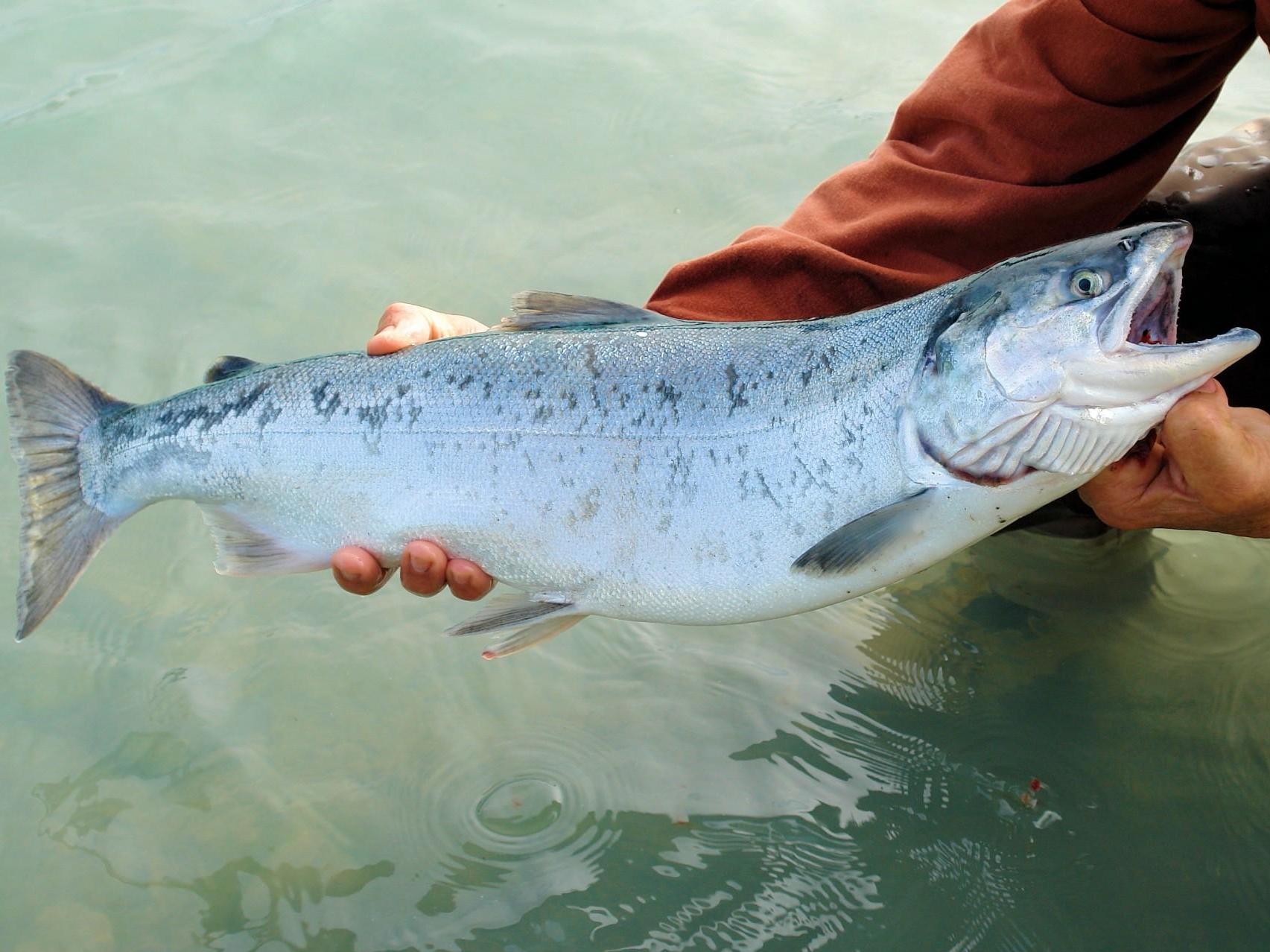Unprecedented heatwave 'kills thousands of fish' in Alaska
‘We’re seeing not just stressful temperatures for salmon, but lethal temperatures,’ experts say

Climate change and warming rivers may have caused the mass death of salmon in parts of Alaska, scientists say.
Large numbers of salmon died prematurely in some Alaskan rivers in July according to local reports, and scientists believe the cause could be the unprecedented heatwave that gripped the state last month.
“Climate change is here in Alaska. We are seeing it. We are feeling it. And our salmon are dying because of it,” said Stephanie Quinn-Davidson, a biologist specialising in salmon and the director of the Yukon Inter-Tribal Fish Commission, in a Facebook post.
The post documented field research that Ms Quinn-Davidson and other scientists undertook in late July to investigate local reports of salmon die-offs. They travelled to Alaska’s Koyonuk River, a major tributary of the Yukon River, and counted at least 850 dead chum salmon along a 200-mile river stretch. But she said that the figures could be four to ten times bigger just in that stretch of the river, which is 500 miles long.
“We also know that dead salmon were observed on the Andreafsky River that flows in the Yukon River,” she said. “So it's very likely the numbers are in the thousands, and quite possibly in the tens of thousands.
“And this is just the Yukon River. Salmon die-offs have been reported on the Kuskokwim River and Bristol Bay.”
In a video documenting the trip that shows flies swarming over the decaying fish, she described how “dead salmon washed up, just piles of them”.
Holly Carroll of the Alaska department for fish and game told The Independent: “We don’t know the exact extent of mortality that this warm water event had on the salmon, but we know that the escapements to the Koyukuk river were almost 100,000 chum salmon less than we expected.”
It is normal for salmon to die en-mass after they spawn. But scientists studying the salmon saw that most still carried eggs, so their death could not have been linked to spawning.
“We ruled out any likely influences of pollution and disease or infection,” Ms Quinn-Davidson wrote. “We are fairly confident these salmon – after surviving years in the ocean and migrating 700 miles upriver to finally spawn – died of heat stress before reaching their spawning grounds.”
She said the deaths coincided with a record-breaking heatwave in July.
“Communities on the Koyukuk reached 90 degrees [32C] on July 7-11... 25 degrees [14C] above average!” Ms Quinn-Davidson wrote. “12 July is when locals started seeing dead chum salmon floating downriver.”
She added: “As soon as the temperatures cooled back down, we stopped seeing dead salmon.”
An unprecedented heatwave cooked places across Alaska in July, causing temperatures to remain above average for 95 consecutive days ending on 30 July, according to climatologist Brian Brettschneider.
Record-breaking temperatures were observed across the state. In Anchorage, the largest city, the mercury rose to 32C on 4 July – the highest temperature since records began.
Climate scientists said that the week ending on Sunday 7 July was the warmest on record in the state. However, the statewide record of 37.8C (100F), was set at Fort Yukon in the state’s north east region over a century ago.
Rick Thoman, a climate specialist at the University of Alaska said at the time that the exceptionally warm weather events would only become more frequent because of the loss of sea ice and warming in the Arctic Ocean.
In the Deshka River, an important salmon stream in southern Alaska, stream temperatures reached 27.6C (81.7F) on 7 July, according to the no-profit Cook Inletkeeper.
“We’ve been tracking stream temperatures in non-glacial systems across the Cook Inlet watershed since 2002, but this is a first – we’ve never seen stream temperatures above 76F [24.4C],” said Sue Mauger, Cook Inletkeeper’s Science Director.
“We’re seeing not just stressful temperatures for salmon, but lethal temperatures,” she said.
Cook Inletkeeper said in a press release that scientific research spanning 20 years provided evidence that climate change is warming Alaskan fish streams, threatening salmon.
“That’s because as streams warm, fish become stressed, and more vulnerable to pollution, predation and disease. So, when temperatures reach upper thresholds, salmon can either die or simply avoid entering these hotspots,” reads the press release, which also notes that salmon die-offs could affect bear populations.
Ms Carroll of the Alaska department for fish and game said: “The cause of death is speculative because we did not collect water samples and because once a fish has been dead a long time, it’s hard to determine the exact cause of death.”
But she continued: “The heat stress is the most likely explanation in the absence of samples because the fish did experience prolonged high temperatures that are known to cause heat stress in salmon.”
Warm water affects salmon metabolism. Salmon do not feed after entering the Yukon river and rely on stored energy to migrate to spawning grounds.
Warm water makes their metabolism work harder: “If you tried to go running on a 90 degree day, you [would] get tired more quickly than if you go running on a 60 degree day,” says Ms Quinn-Davidson, adding that the salmon might simply have run out of energy.
Ms Carroll explained that warm water may can also affect their organs and all other systems and can also ramp up any effects of normal parasites or pathogens because the salmon are less able to fight them.

Join our commenting forum
Join thought-provoking conversations, follow other Independent readers and see their replies
Comments
Bookmark popover
Removed from bookmarks